Chicken ownership is picking up steam from backyard birds in the ‘burbs to rural roosts. Unfortunately, with this newfound eggcellent adventure, some owners encounter a heartbreaking clash between their new feathered friends and their pups.
But there are things you can do to stop the canine-chicken carnage. We’ll explain why dogs attack chickens and how to protect your flock from harm below.
How to Break a Dog from Killing Chickens: Key Takeaways
- Unfortunately, some dogs attempt to catch, kill, or even consume chickens living alongside them. But you should not get mad at your dog for doing so — he isn’t doing so out of malice; it is simply a byproduct of his instinctual drives.
- Fortunately, training and other interventions can keep your flock safe. We’ll share six different strategies for breaking your dog’s chicken-killing habit, ranging from simply keeping them separated to implementing desensitization training.
- Some breeds are better with chickens than others. Livestock guardian breeds, such as shepherds and various sheepdogs, are generally a better fit around chickens than sighthounds or ratters who typically have strong prey drives.
Mutt Motivations: Why Do Some Dogs Kill Chickens?
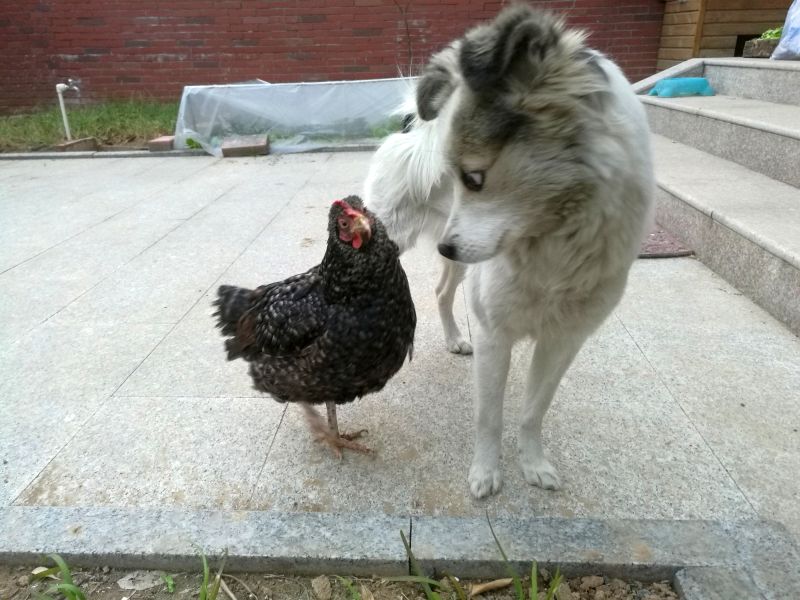
Witnessing your dog attacking a chicken is horrifying, but for your pup, killing a chicken likely feels completely natural!
Remember: Our cuddly canines are animals and have instincts that won’t always mesh with our human norms. Understanding these behaviors can prevent your dog from killing chickens in the future.
The most common reasons dogs attack chickens are:
- Prey drive: Dogs may be far removed from their days in the wild, but the instinct to chase, catch, and kill smaller animals remains, particularly in breeds with high-prey drives like terriers and hunting hounds.
- Play: Some pups are too rough during play and accidentally kill chickens or other small animals by thrashing, chewing, or even trampling them.
- Anxiety: Dogs who are unsure of new chickens in the yard may react aggressively.
- Hunger: This is the least likely scenario if you’re dealing with your pet dog killing chickens, but some dogs (mostly feral) kill chickens out of hunger.
Figuring out why your dog is killing chickens is only half of the battle, but with hard work, you can keep your chickens safe from harm.
6 Ways to Break a Dog from Killing Chickens
Curbing your dog’s chicken aggression takes time, training, and patience. It isn’t a one-size-fits-all process, with some dogs needing more interventions than others.
There are a few effective methods to choose from. You may find that one approach works by itself, or you may need to incorporate two or three different strategies.
#1 Simply Keep Your Dog Separated from the Chickens
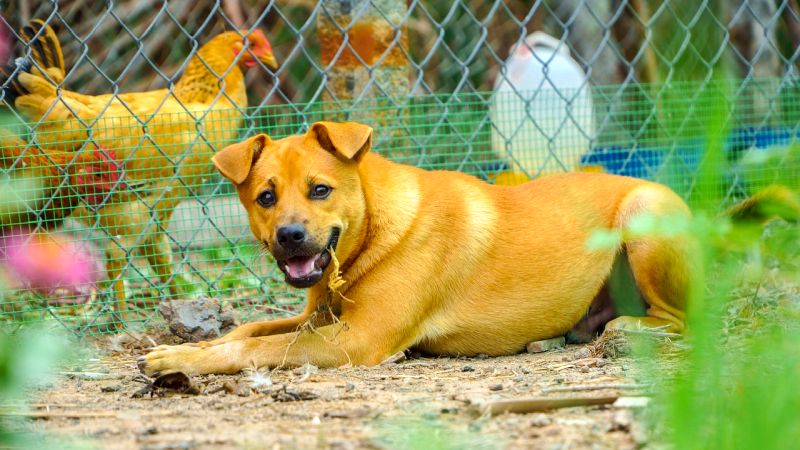
If your dog has a high prey drive, it’s probably best to keep him away from your chickens altogether. Not every breed is a friend to feathered ones, and that’s OK. You aren’t failing as an owner by recognizing your pup’s needs and prioritizing your chickens’ safety. Quite the opposite, actually.
To maintain your chickens’ safety, set up a coop or chicken run that will keep your chickens in and your dog out. This eliminates accidental encounters and potential heartbreak. Always supervise your dog whenever he’s loose in the yard, even if your chickens are contained.
For pup parents with free-range chickens, separation is trickier. In these instances, you’ll just need to keep your dog leashed or contained in an escape-proof portion of the yard away from the flock. See our article on the best escape-proof dog fences if you plan on creating a dedicated, enclosed space for your pooch and letting the chickens roam free.
Ideally, you want your chicken’s roaming zone to be far away from your dog’s outdoor space.
#2 Socialize Your Dog with the Chickens
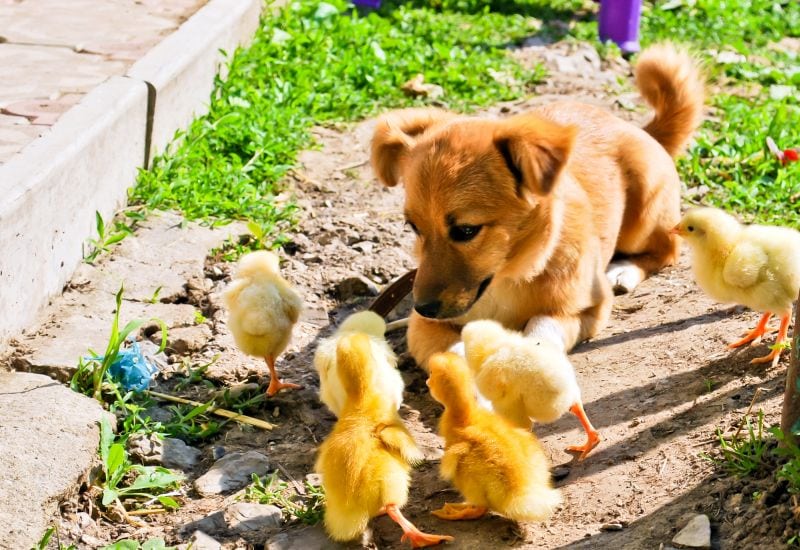
Introducing your dog to chickens from an early age through puppy socialization is the best way to avoid chicken aggression.
This requires bringing your puppy out to the coop and walking him around the chickens soon after he comes home.
Reward him for positive interactions with praise and treats and promptly correct any rough play or aggressive behaviors with a verbal command.
Just be sure that you never hit or yell at your pup. You want to keep his interaction with the chickens positive and avoid aversive training methods.
With older dogs, socialization is trickier. You need to start slow, keeping your dog leashed and chickens housed in their pen. Approach the chicken run with your dog, moving slowly.
You’ll need to repeat this over several days until he can approach the pen without acting out.
If your dog is calm in approaching the pen, reward the behavior with a yummy treat and praise. Let him smell around the run’s exterior and sniff the birds through the fencing to acclimate and grow comfortable. Praise positive reactions.
If he reacts aggressively, issue a verbal correction and walk away. You’ll need to repeat this until he can approach the pen without acting out. In time, he can graduate to non-leashed approaches, leashed face-to-face introductions, and eventually, unleashed introductions.
Just understand that socialization isn’t a race, and you don’t want to rush your dog’s pace. It may seem tedious, but doing things right the first time and avoiding negative interactions is crucial for long-term success.
#3 Use the “Restrain & Reward” Method
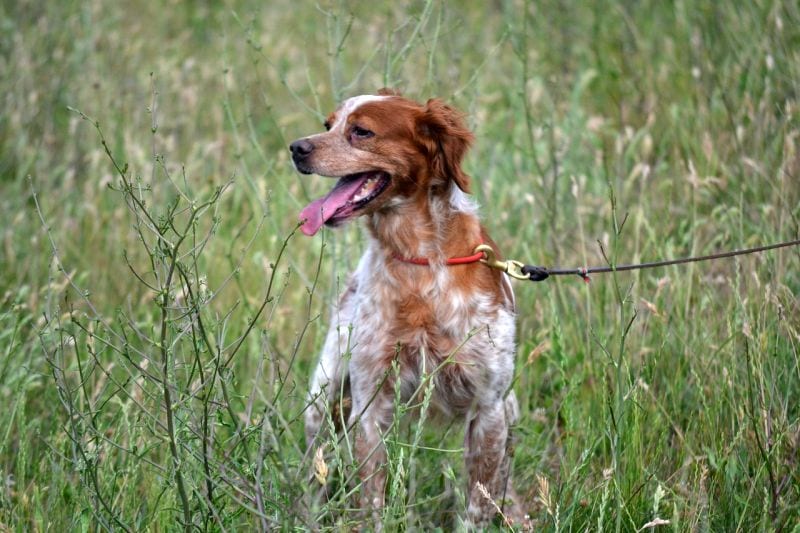
In this article we’re giving owners a few different options for breaking a dog of chasing chickens, but we like this method best, since it’s the least aversive.
This is one of the best ways to acclimate your doggo to chickens (aside from early socialization), as it relies solely on positive techniques and uses what experts refer to as desensitization.
Essentially, you’re going to reward your dog for being calm while looking at or approaching the chickens, and stop doling out the treats, praise, and scritches whenever he gets worked up or displays aggressive behaviors.
To start, place your chickens in their pen for safekeeping and leash your dog. Approach the pen slowly while showering your dog in praise — as long as he remains calm, keep giving him the good stuff.
If he barks, growls, or reacts negatively, bring your dog further away. Find the distance at which your dog can remain calm near the chickens and reward him with treats, praise, and play for ignoring the chickens (or, at the very least, not trying to go after them).
Repeat the process the following day and continue over time until you’re able to approach the pen without your dog reacting. This can take time, so prepare for the long haul.
This strategy is one of the core practices used with reactive dog training, and over time can lessen any unwanted overreaction a dog might display towards a trigger (like chickens).
It’s essential that you don’t push your dog – you need to find the distance he can remain calm at and work within that space, only challenging him by moving a few steps closer when he can comfortable ignore the chickens at his threshold distance.
Once you’re convinced that your dog won’t react negatively, you can remove the lead and try the exercise unleashed. Follow the same rules, working up to approaching the chicken run without a reaction. From there, you can practice leashed face-to-face exercises if it’s safe to do so with your dog.
#4 Use the “Stop & Pull” Method
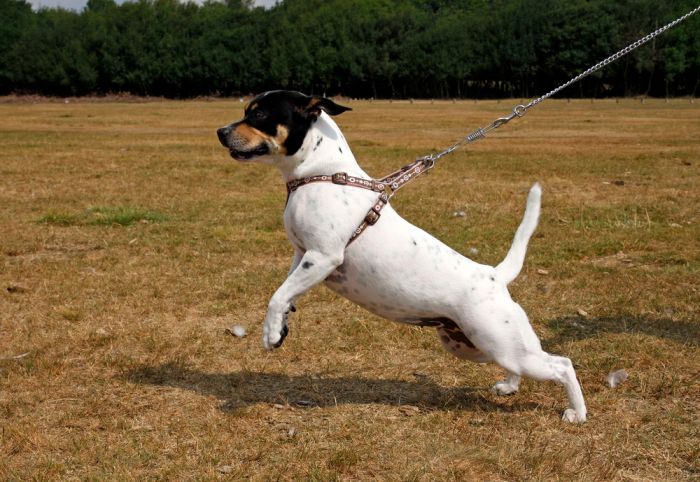
This is a slow and steady approach, but it’s a good way to safely acclimate your dog to the coop’s presence in your yard and correct aggressive behaviors in real-time.
However, it does require you to issue firmer corrections than the previous strategy, which isn’t ideal. It certainly isn’t what we’d consider “aversive,” in the same way things like the use of a shock collar (for example) is, but it isn’t quite as pleasant for your pup as a purely positive approach. We always recommend opting for gentler, force-free methods before resorting to using corrections when possible.
Start by housing your chickens in a coop and slowly lead your dog toward them, while leashed.
If he reacts aggressively to seeing them, say “No!” or “Stop!” and stop where you are. Then, you’ll want to pull him back toward you.
Use gentle pressure when doing so — you’re not trying to do a “leash pop” or jerk him back roughly. Also, note that this is safer to do when your dog is wearing a harness, rather than a collar.
Hopefully, he’ll stop trying to approach the chickens. When he does, shower him with praise and treats.
Some pup parents prefer to use a specific noise (such as a finger snap) to make the correction, which is also acceptable.
Over the course of a few days, you will repeat this, gradually getting closer each time. Continue to issue the verbal correction and pull your dog back if he reacts negatively.
In time, your dog will be able to approach the coop without reacting. At this stage, you can remove the leash and gauge his reaction around the coop. It may take weeks, but in time, he’ll be desensitized enough to approach the coop unleashed without issue.
If it’s safe with your dog, you can move on to leashed introductions without the pen between them.
#5 Teach Your Dog a “Drop” Command
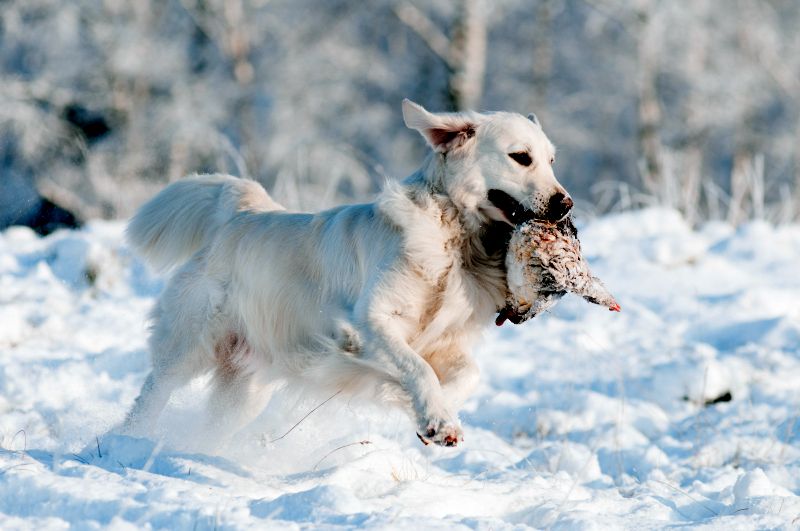
This lesson won’t prevent your dog from attacking chickens, but it may allow you to save a chicken’s life if you catch him in the act.
Essentially, you’ll just need to teach your dog to drop things on cue. And honestly, this is a skill all dogs should learn anyway — you never know when your dog is going to pick up something that may be dangerous.
To start, give your dog a toy he likes, such as a ball or bone.
Then, grasping the corner of the item, tell him to “Drop it” (some owners shorten the cue to simply “Drop”). If he opens his mouth or loosens his grip on the item, take it and give him a treat with lots of verbal praise.
Repeat the cue several times per training session until he reliably drops the item on command. Most dogs will learn this skill pretty quickly, but it is wise to practice it often — time will be of the essence if Fido fetches one of your feathered friends!
#6 Reach Out for Professional Help
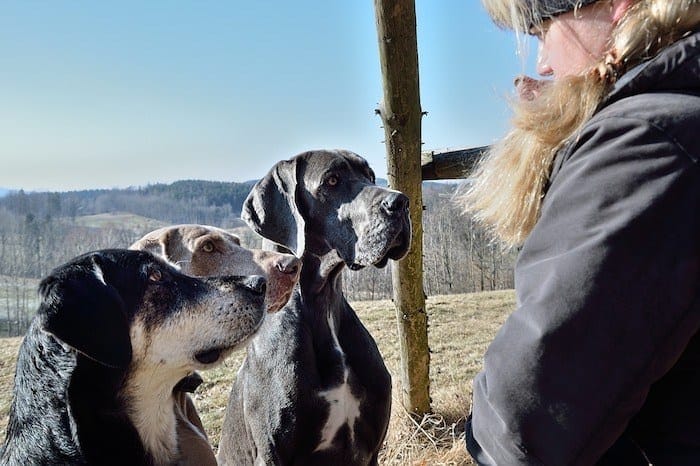
Dog training isn’t easy, and some dogs need more work than others. So, if you grow frustrated from a lack of progress or would simply rather outsource the training process, reach out to a reputable trainer and have him or her take over.
Just be sure to choose a good trainer, who embraces LIMA (least intrusive, minimally aversive) principles and uses positive approaches to work with your pupper.
And whatever you do, be sure to run the other way if the trainer advocates anything like the approach discussed in the next section.
One Way You Should NEVER Try to Break a Dog from Killing Chickens
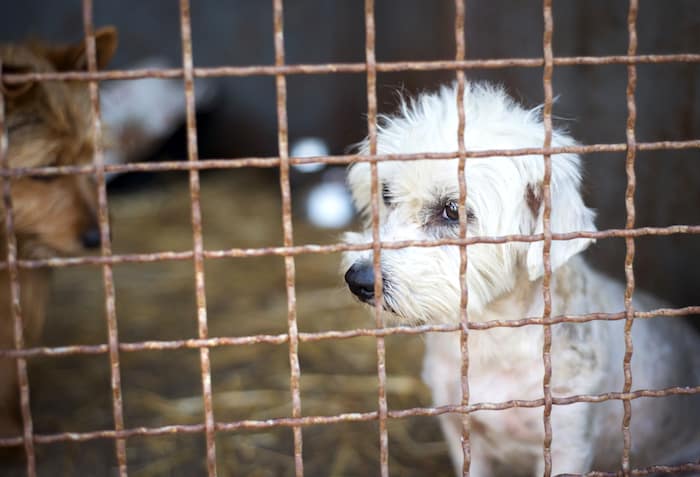
Dog training has undergone one heck of a transformation, and countless old-school techniques have been retired for safer, more humane options.
One of these old-school approaches that you should completely avoid doing is the so-called “carcass” approach.
The carcass approach consists of tying a chicken your dog has killed to his collar or leaving it in close proximity to him after scolding him. If he approaches the carcass or interacts with it in any way, the method says to scold him.
The “logic” behind this approach was that the dog would find the chicken’s dead body unpleasant, as well as the repeated scolding from his owner. This, it was thought, would teach him to ignore chickens entirely.
But this is clearly something loving owners will want to avoid doing. Not only is the carcass approach unsafe and unhygienic, but it’s just plain ineffective and cruel.
Dogs don’t operate like that. Period.
Additional Tips for Stopping Your Dog from Killing Chickens
In addition to training, preventing your dog’s chicken aggression requires you to look at his day-to-day life. Some aspects may be lacking, leading to his behavior.
To stop your dog from attacking chickens:
- Provide enrichment. Dogs have natural instincts they need to fulfill, from sniffing new scents to flushing game from brush. Your dog’s life should include more than couch time and bathroom breaks. Not only will incorporating more canine enrichment make him happier, but it can prevent frustration, potentially curbing aggression toward chickens. It may sound counter-intuitive; many owners fear using toys like flirt poles will make a dog more prey-driven. But often, when a dog is given a chance to exercise his natural instincts and urges in an appropriate setting, he becomes less likely to demonstrate that behavior in situations where you want to avoid it (such as treating your chickens as prey).
- Exercise your dog. Every four-footer needs daily physical and mental exercise. Depending on his breed, this can vary from a romp around the yard to a long jog. Incorporate more exercise in your dog’s routine to keep him out of trouble.
- Socialize your pup. Your dog needs to learn that your chickens are his friends to prevent aggressive behaviors like chasing or, in extreme cases, killing. This means introducing him to your flock slowly and praising him for positive interactions. Negative behaviors like growling, lunging, or barking should be addressed appropriately and prevented as much as possible.
- Address anxiety. Change can be scary to pups, especially if you’ve recently torn up the backyard to add a coop and some noisy chickens. Allow your dog to adjust gradually to the new presence around the yard and don’t be surprised if he struggles significantly for the first few months. Some dogs need more time to get acclimated to a new situation than others.
- Feed your dog adequately. This shouldn’t really need to be said, but make sure your dog is getting enough food to meet his daily needs so he doesn’t go looking for substitutions in your coop. Select a quality, balanced diet that meets AAFCO standards to ensure proper nutrition.
Which Dog Breeds Are Good with Chickens?
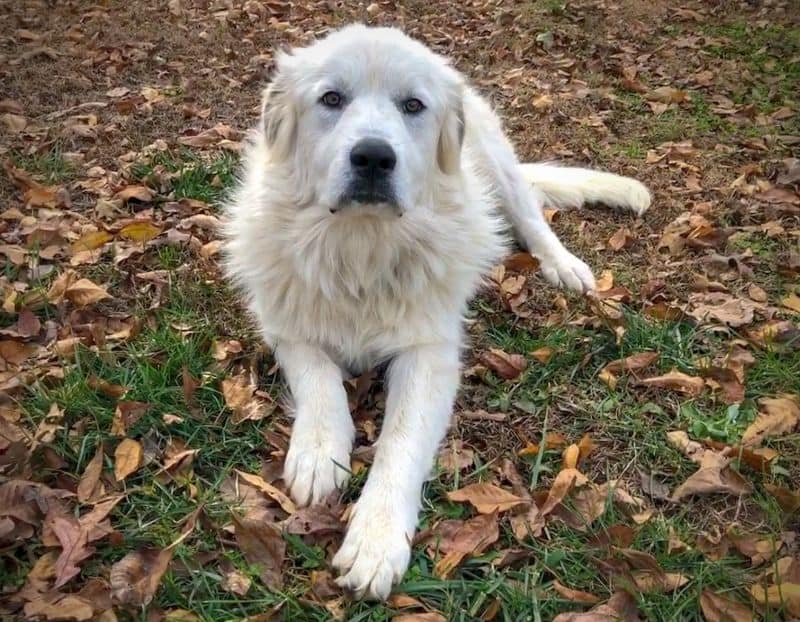
If you’re still at the planning stages and looking for a farm dog with chicken skills, you’re in luck. Some breeds were developed as flock guardians, so they are dogs that make great chicken companions, providing protection against predators like raccoons, coyotes, and foxes.
The best dog breeds around chickens are:
- Maremma sheepdog: Hailing from Italy, this ancient breed is sweet around farm animals big and small but won’t hesitate to handle predators with force.
- Great Pyrenees: This gentle giant has a heart almost as large as his body, but don’t let that fool you: He’s a renowned livestock guardian who will put life and limb on the line for his flock.
- Komondor: While this Hungarian gentleman is mainly known for his mop-like appearance, he’s a fierce flock protector with a quick wit.
- Anatolian shepherd: Spending periods with chicken friends is no big deal for this leggy livestock guardian.
- Puli: This small Hungarian herder is beloved for his lively demeanor around humans, but he also makes an excellent livestock companion with his gentle spirit and protective nature.
These breeds may have origins around livestock, but they still require careful training and socialization to ensure your flock’s safety. Some doggos may be too boisterous for life around smaller livestock like chickens and may work best with sheep.
Which Dog Breeds Are Bad with Chickens?
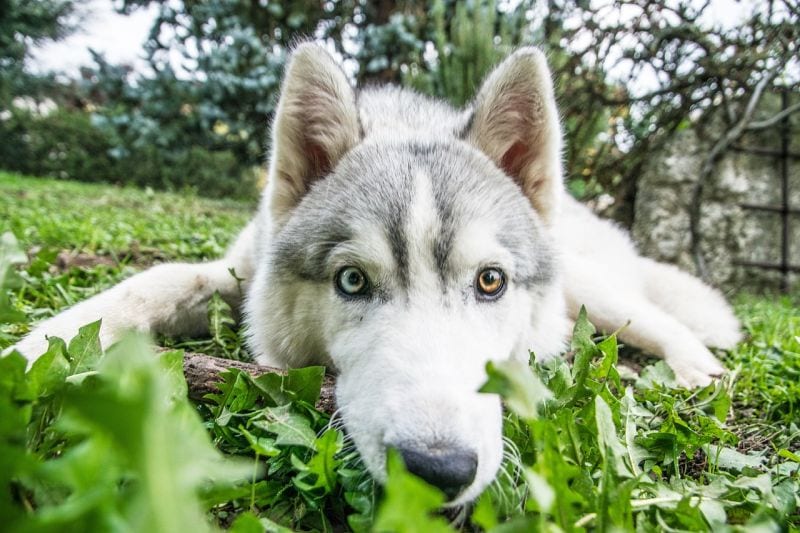
While some breeds are all-star flock guardians, others are more likely to wind up committing chicken homicide. These potential poultry assassins aren’t bad or dangerous dogs, but they’re typically not cut out for #chickenlife.
The worst breeds to have around chickens are:
- Siberian husky: While a clown around his people, this bushy-tailed brawn is notoriously rough during play and has a high prey drive and predatory aggression that can spell disaster with backyard hens.
- Greyhound: This sleek sighthound is known to chase perceived prey at high speeds, making him a foe to most small animals, including chickens.
- Weimaraner: Weims and other bird dogs like pointers were developed to point and flush game from brush–a talent that doesn’t always mesh with pet chickens.
- Jack Russell: This rambunctious ratter is a vermin killer by trade, which can be dangerous around small animals, including chickens.
- American pit bull terrier: We love pitties and their epic personalities, but these house hippos have a heck of a prey drive that can be dangerous around chickens.
There’s always an exception to the rule, and some pups may be perfectly fine around chickens despite their breed’s background. Early and ongoing socialization and training can make any dog friendly to all things feathered, regardless of breed. That said, these breeds generally aren’t the best companions for chickens.
***
It’s scary when your dog starts attacking your chickens, but you can overcome this together and restore harmony to your home.
Do you have any tips for a happy household for dog owners with chickens? Let us know in the comments.
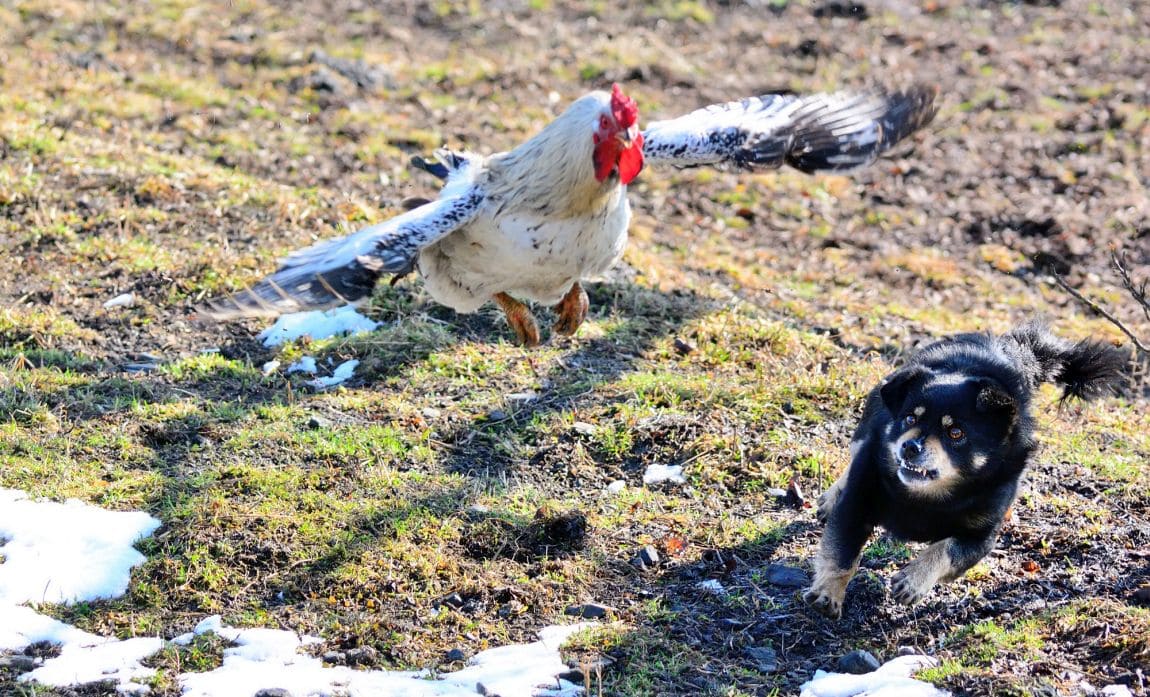

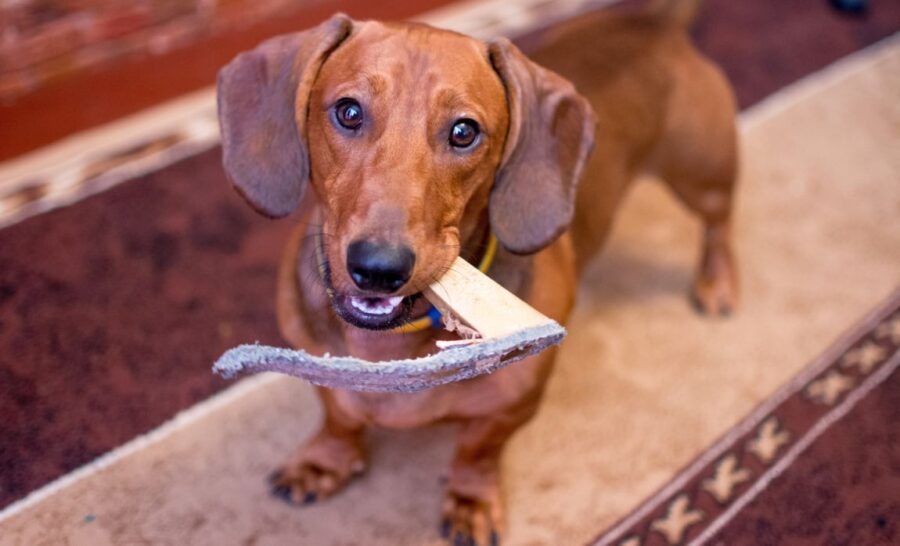


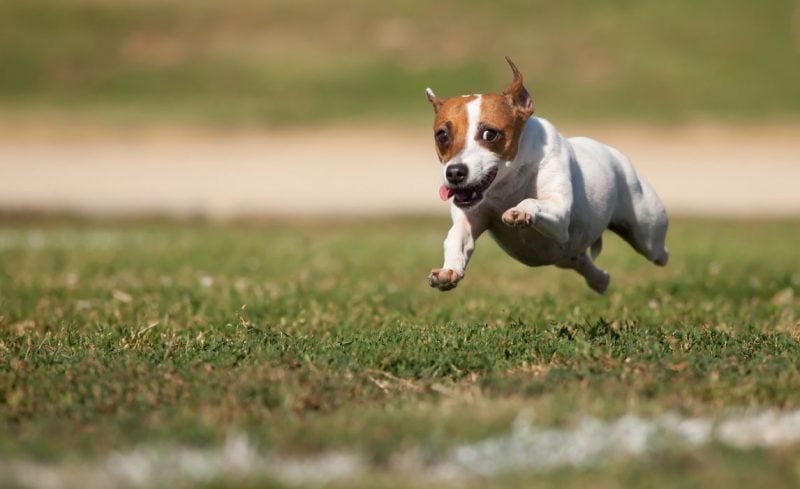
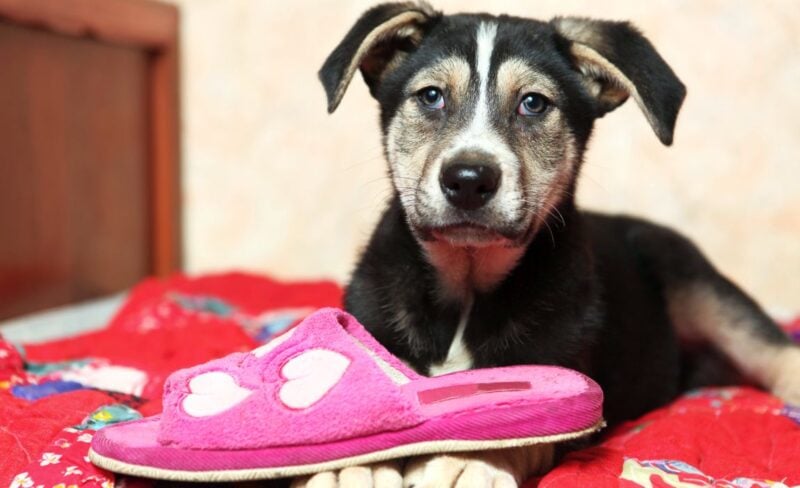

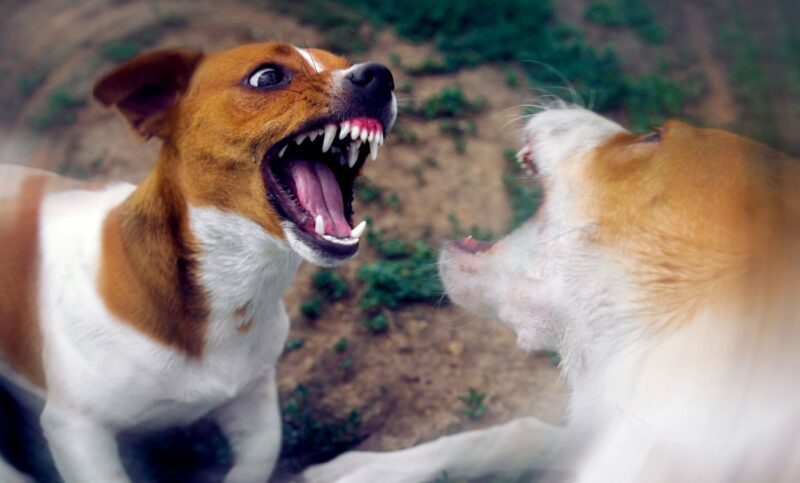
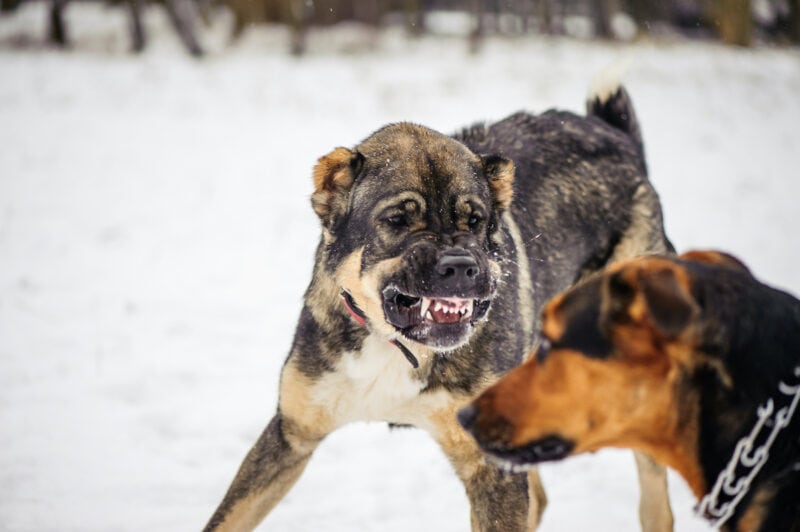
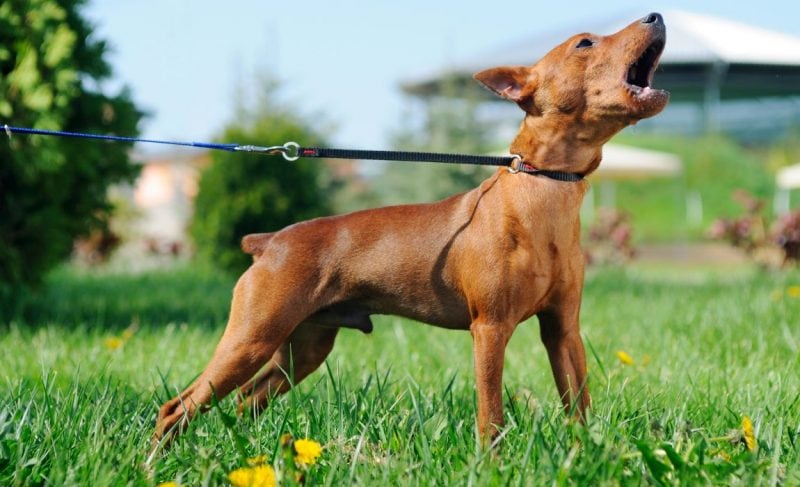
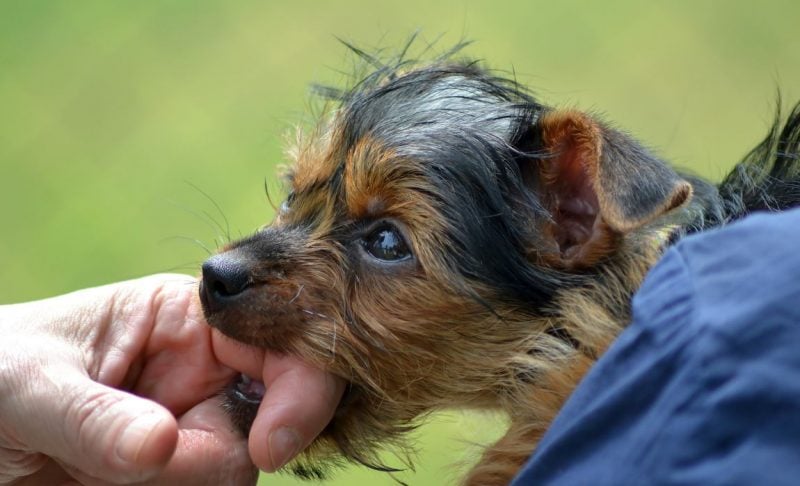

Leave a Comment